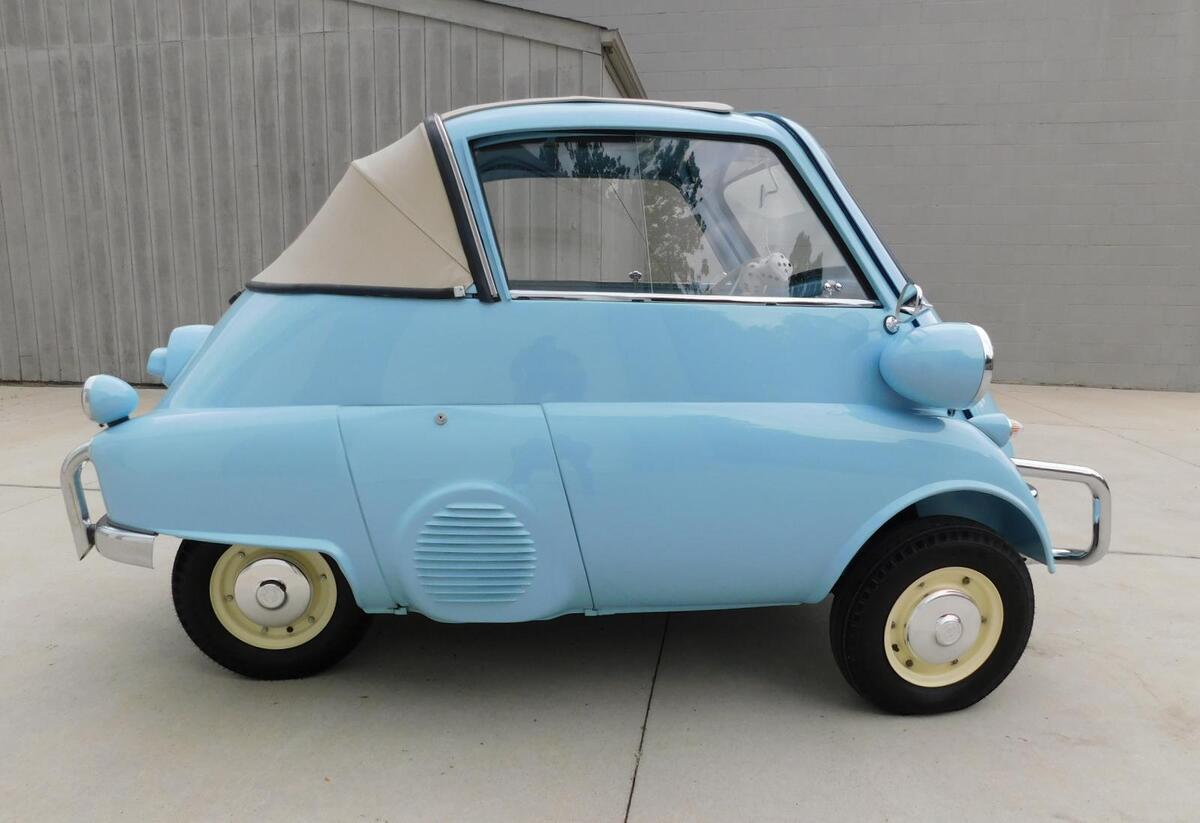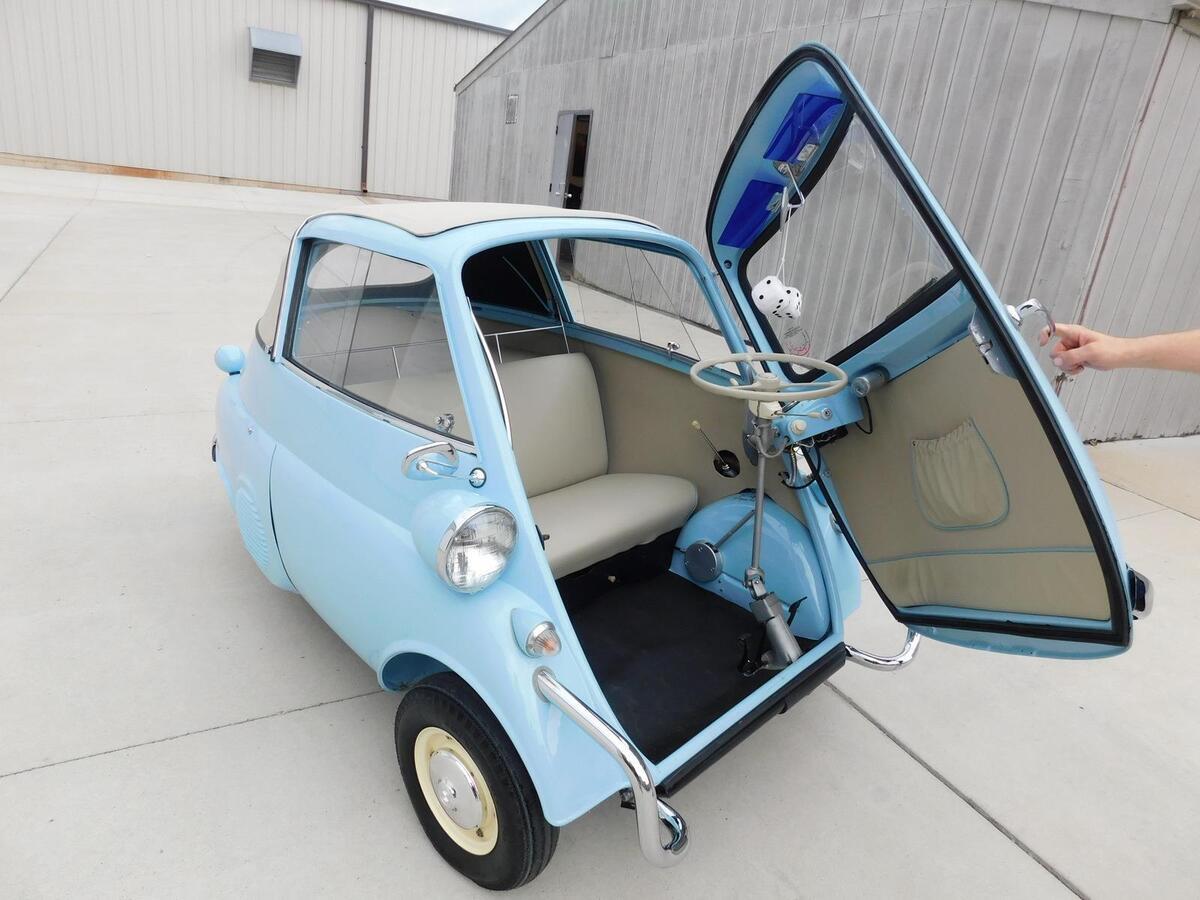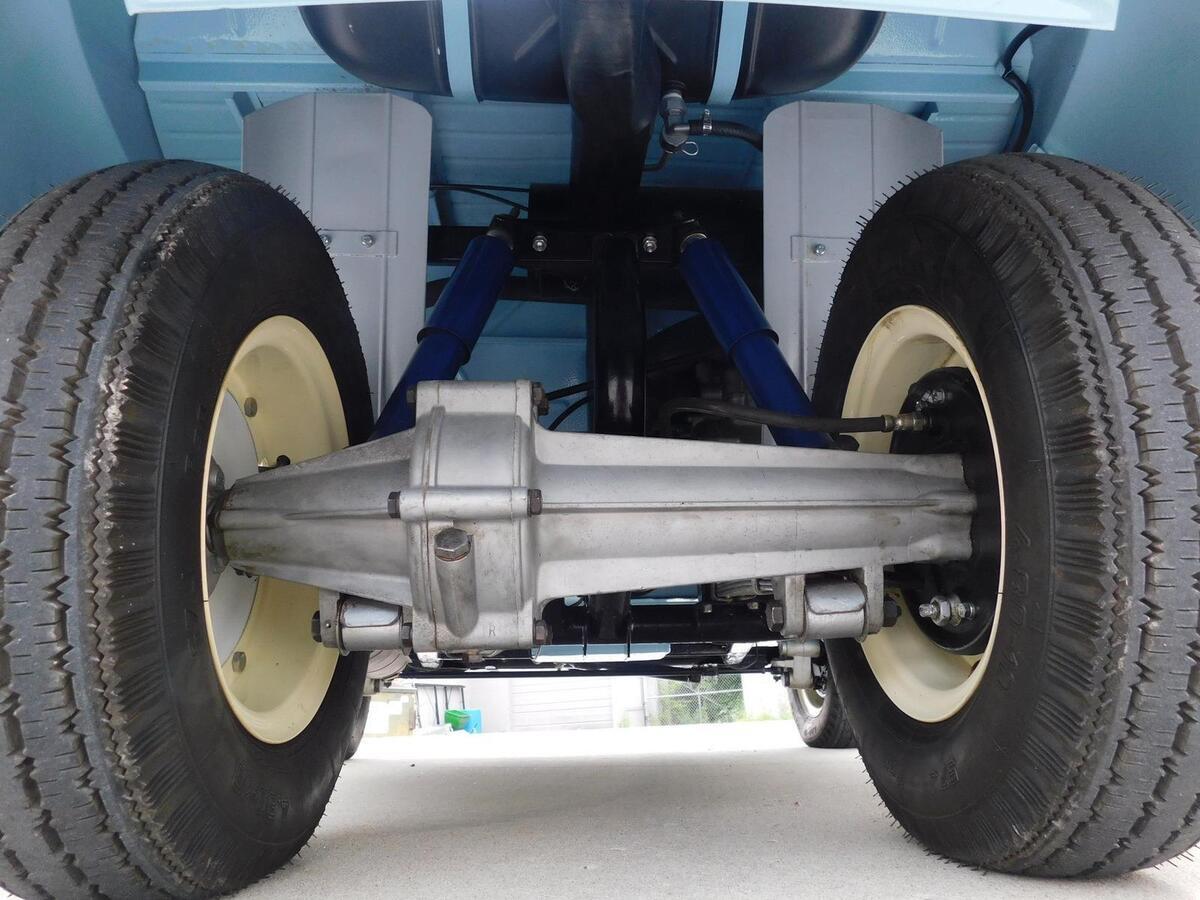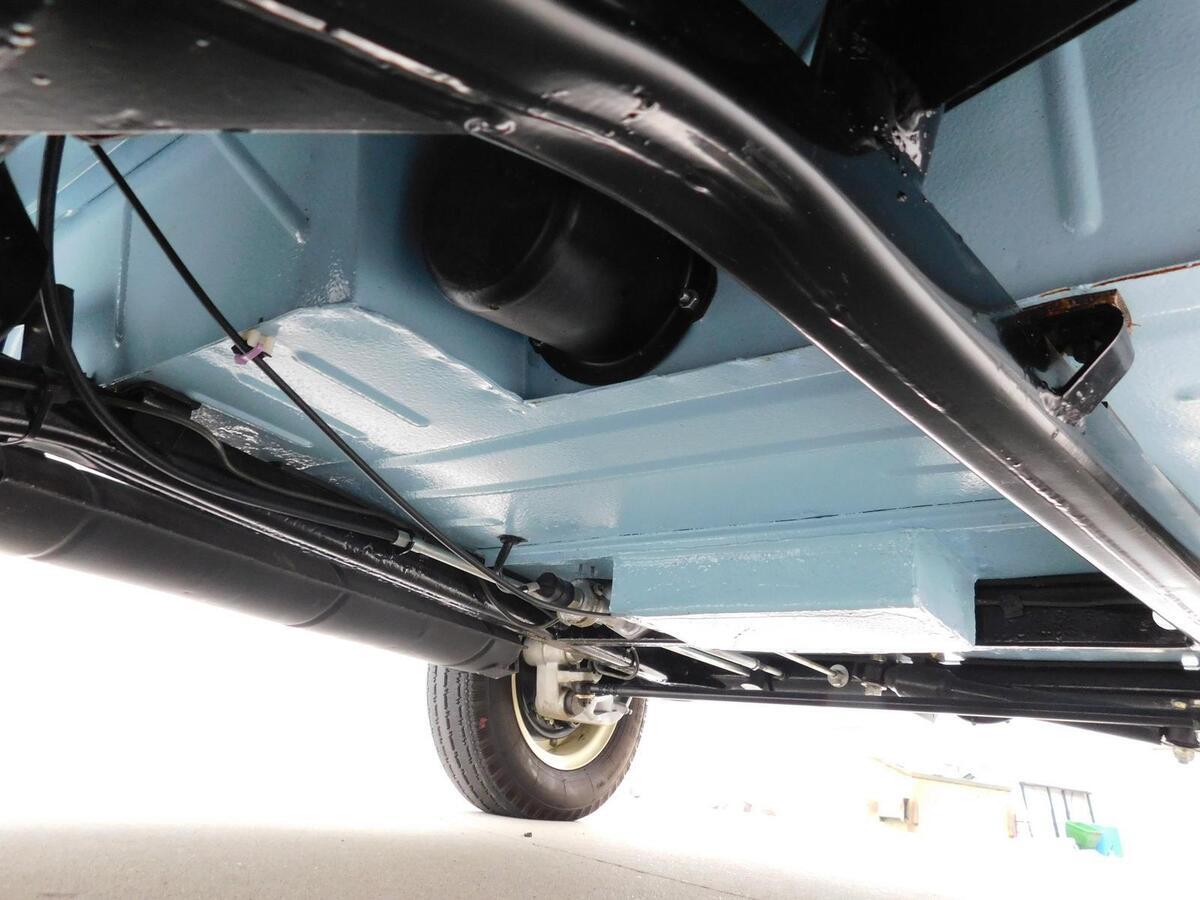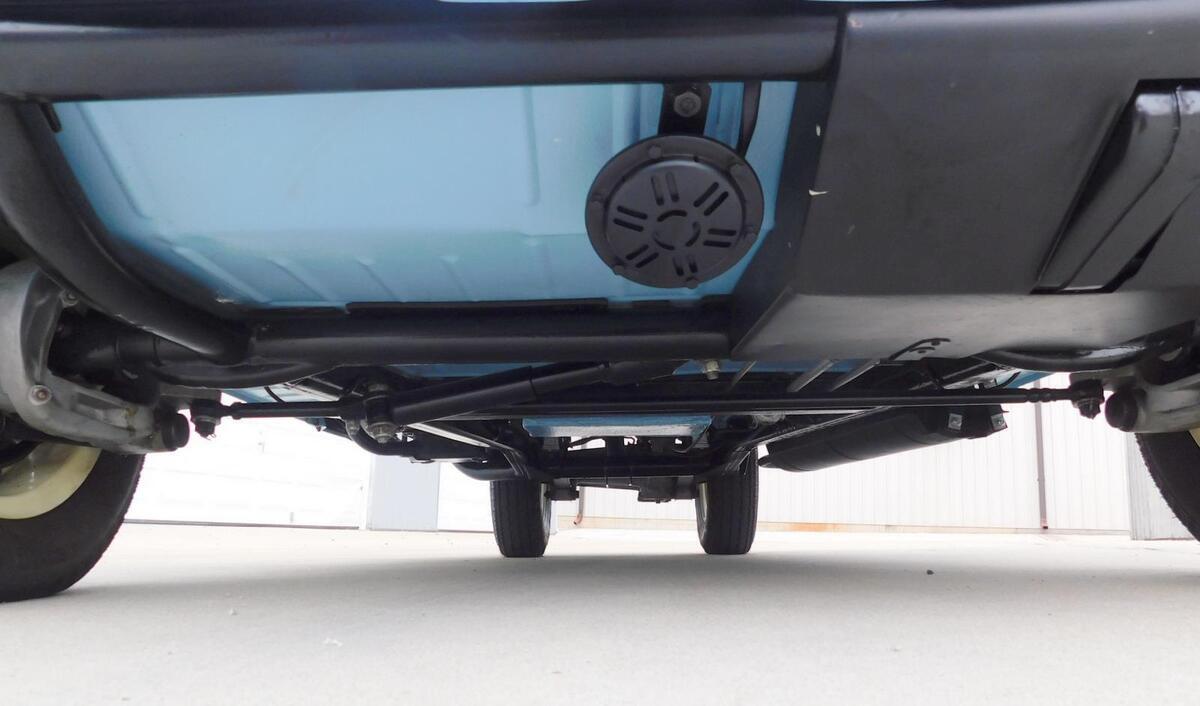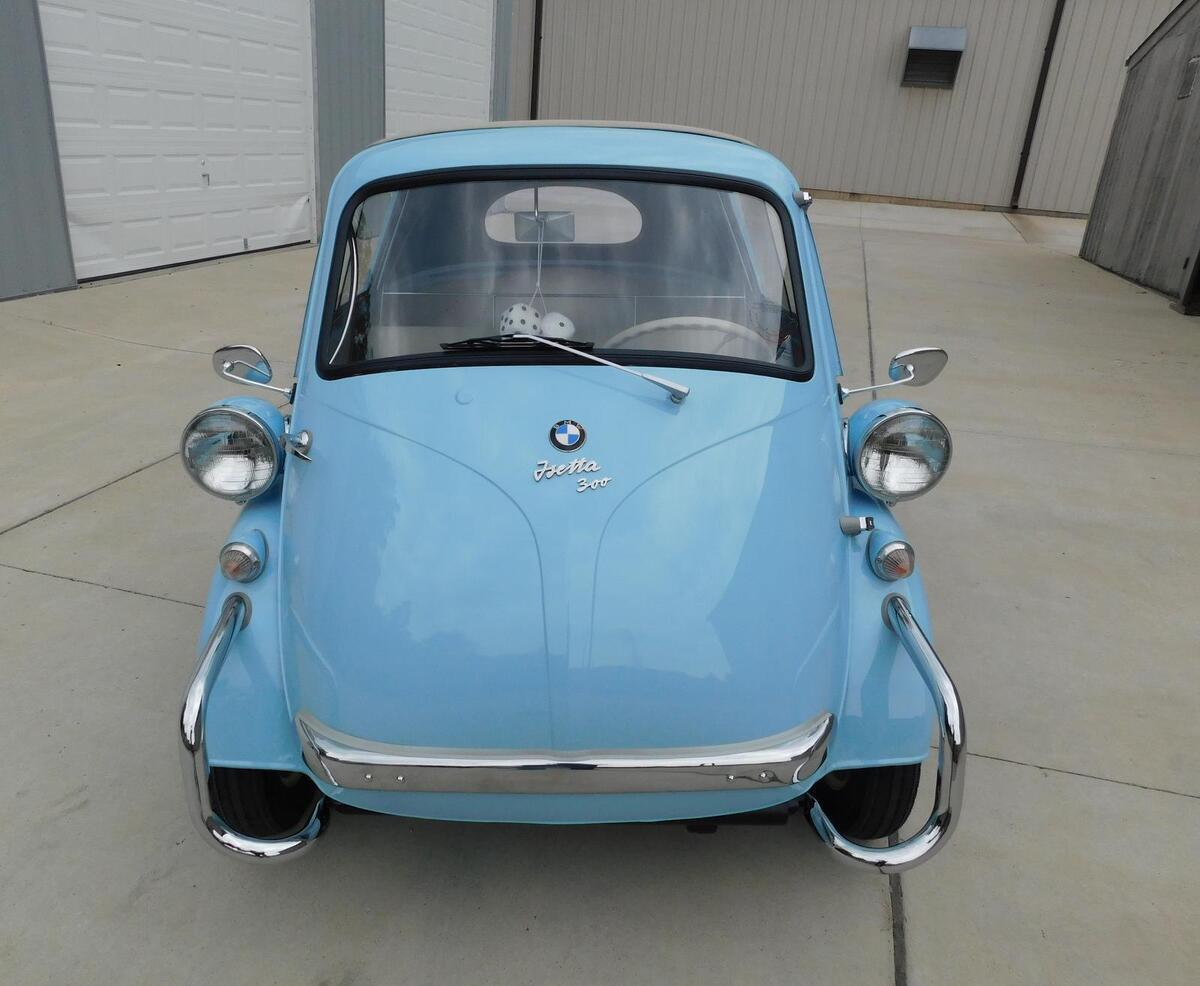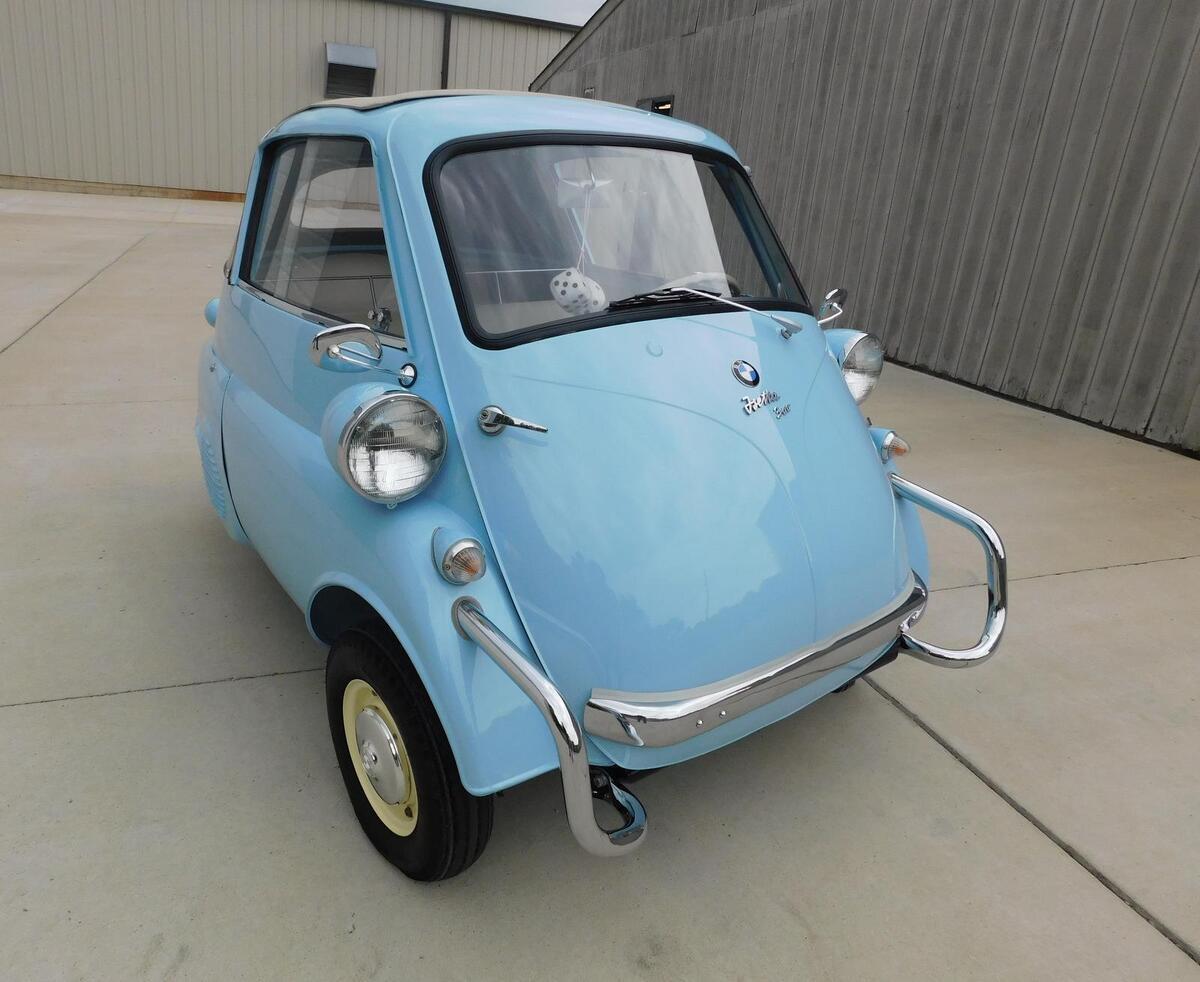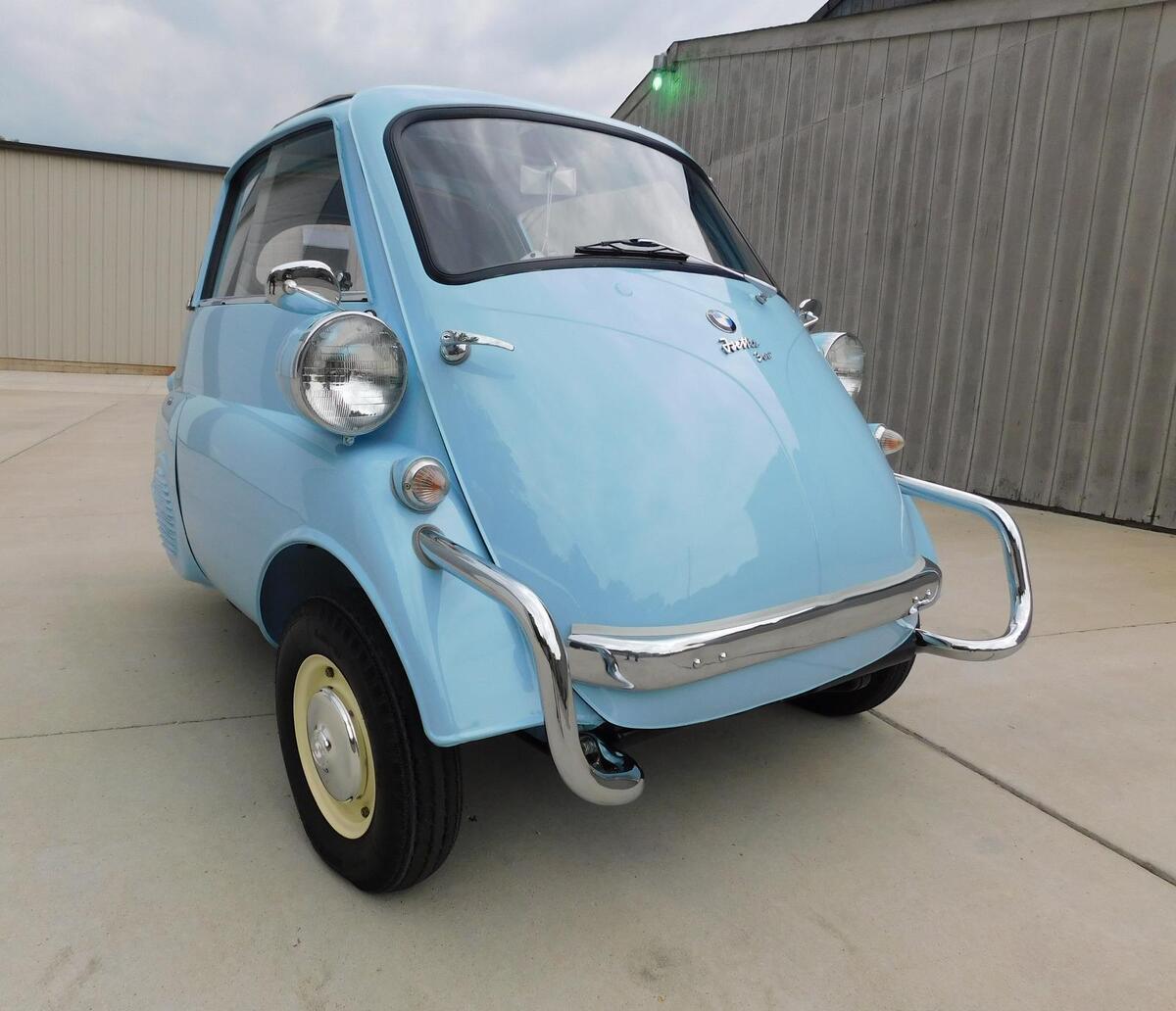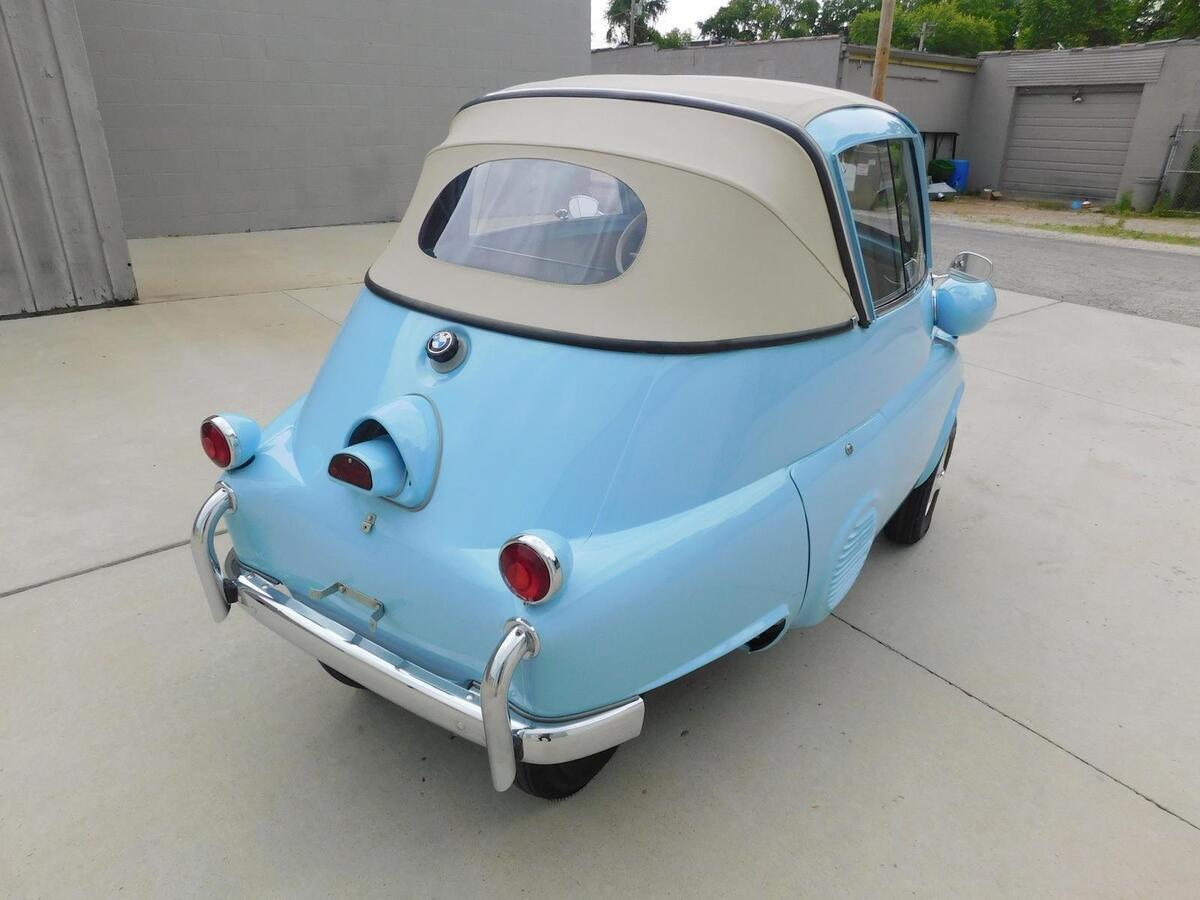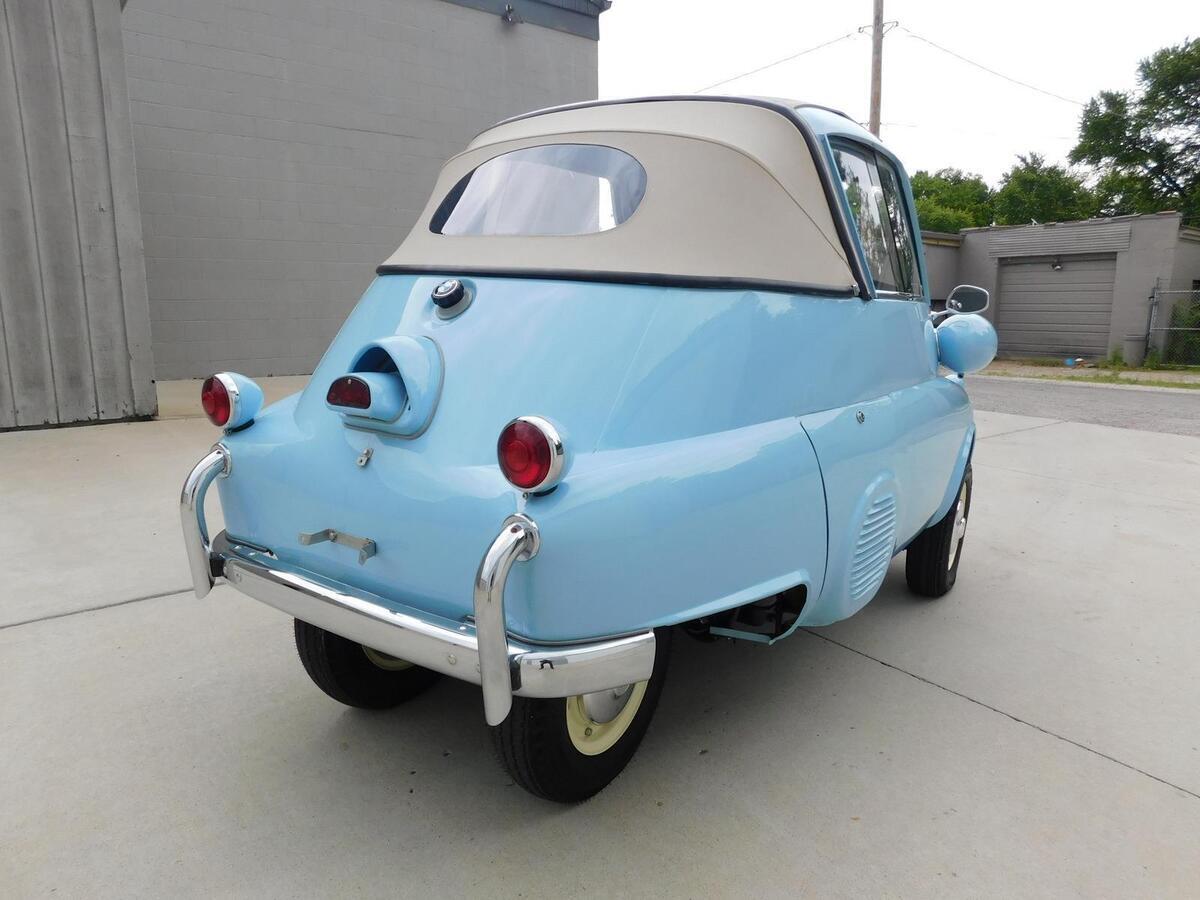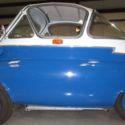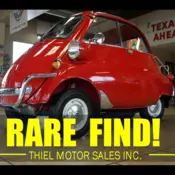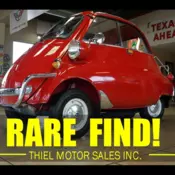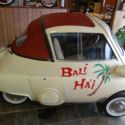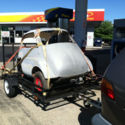1957 BMW ISETTA 300 CABRIOLET 4 YEAR CONCOURSE RESTORATION MUSEUM QUALITY!
| Make: | BMW |
| Model: | ISETTA |
| SubModel: | 300 |
| Type: | CABRIOLET |
| Year: | 1957 |
| Mileage: | 15106 |
| VIN: | 500407 |
| Color: | Blue |
| Engine: | 298CC |
| Fuel: | Gasoline |
| Transmission: | 4 SPEED |
| Drive type: | CABRIOLET |
| Interior color: | Blue |
| Vehicle Title: | Clean |
| Item location: | Fenton, Missouri, United States |
1957 BMW ISETTA Additional Info:
1957 BMW ISETTA 300 CABRIOLETThe BMW of today, with its tech-laden super-sedans, hybrid sports cars, and ultra-luxury SUVs would probably not exist if it weren’t for an Italian appliance company named Isothermos. The loose connection began in 1942 when Isothermos was purchased by a young engineer and heir to an industrial fortune, Renzo Rivolta. With a passion for motoring, Rivolta began to expand the company’s range, adding motorbikes to the portfolio and renaming the works Iso Autoveicoli S.p.A. After World War II, Europeans were desperate to get back on wheels, but with raw materials and fuel at a premium, few could afford a conventional car. Motorbikes and scooters became hugely popular, but they were impractical in bad weather or for families. As a way to bridge the gap between bike and car, some manufacturers turned to motorbike-powered microcars that offered cheap, efficient, and practical transport for the masses.Wanting to cash in on this new market, Renzo Rivolta began development of a 2-passenger microcar with a single front clamshell door, and a small capacity motorbike engine mounted amidships. Introduced in 1953, the Iso Isetta Turismo was the quintessential cheeky bubble car. It was adorable, it could transport two people and some groceries, and it was highly efficient, if not terribly quick thanks to having just 236 c.c. and 9 ½ horsepower. It turned out to be reasonably successful in the home market, with 20,000 built at the Iso works in Milan.Iso recognized a viable market for the Isetta, however, he lacked the manufacturing capacity to meet Europe-wide demand. Rivolta’s stroke of genius came in 1954 when he sold the rights to the design to a number of different companies in Europe and South America. Among those firms was BMW, who was struggling through the post-war recovery. Most of their factories were devastated by bombing, and their Eisenach works fell within Russian-controlled East Germany. BMW’s post-war product line consisted mainly of expensive six and eight-cylinder luxury cars that, while capable, had limited appeal in the post-war economy. Without the time and resources to develop a small car, the Isetta was the perfect opportunity to support the bottom line. Of course, they couldn’t help but to fettle with the design, modifying it to accept a 250 c.c. four-stroke engine shared with the R25/3 motorcycle and making minor styling changes. In 1956, BMW bumped the capacity to 298 c.c. which gave the new Isetta 300 nearly one-and-a-half times the power output over the 250. With a storming 13 horsepower on tap, not even hills could stop BMW’s mighty-mouse! The Isetta continues to delight today’s collectors, and even the most serious collections make room for the adorable – yet historically significant – German bubble car.This charming 1957 Isetta is a one of just a few to feature the rare and desirable Cabriolet body and was a 4-year concours restoration completed in 2013 by Jenny Morgan owner of "Jenny's Isetta Werks in Milwaukee. Wisconsin. Various sources put the number of Export-model cabriolets at around 50; a tiny fraction of the more than 160,000 Isettas built by BMW. • The concourse restoration includes detailed billing of hours, parts, labor. photos adding up over $30,000. There are detailed personal correspondence with Ms. Morgan regarding each bill during the restoration progress. The restoration included cosmetic, mechanical and wiring with extreme attention to detail. Main parts ordered ordered for the restoration were imported from Germany. Items included with the Isetta:• Book "Isetta, 5th Edition for US Export Models," with notes by Ms. Morgan• BMW Isetta factory repair manual BMW wiring diagram - Tool Kit-Three ring binder with Isetta part details and diagramsThis 1957 BMW Isetta is one of the nicest in the world and it shows. The paint is amazing with a deep shine and a mirror like reflection. The body is laser straight and the fit & finish is superb. All of the chrome, trim and bright work is outstanding. Everything on the vehicle functions as it should and the car goes straight down the road with ease. So if you are in the market for a stunning example of BMW Isetta 300 Cabriolet then look no further.Call314-594-1404 to purchase or with any questions.314-594-1404
1957 BMW ISETTA 300 CABRIOLET
The BMW of today, with its tech-laden super-sedans, hybrid sports cars, and ultra-luxury SUVs would probably not exist if it weren’t for an Italian appliance company named Isothermos. The loose connection began in 1942 when Isothermos was purchased by a young engineer and heir to an industrial fortune, Renzo Rivolta. With a passion for motoring, Rivolta began to expand the company’s range, adding motorbikes to the portfolio and renaming the works Iso Autoveicoli S.p.A. After World War II, Europeans were desperate to get back on wheels, but with raw materials and fuel at a premium, few could afford a conventional car. Motorbikes and scooters became hugely popular, but they were impractical in bad weather or for families. As a way to bridge the gap between bike and car, some manufacturers turned to motorbike-powered microcars that offered cheap, efficient, and practical transport for the masses.
Wanting to cash in on this new market, Renzo Rivolta began development of a 2-passenger microcar with a single front clamshell door, and a small capacity motorbike engine mounted amidships. Introduced in 1953, the Iso Isetta Turismo was the quintessential cheeky bubble car. It was adorable, it could transport two people and some groceries, and it was highly efficient, if not terribly quick thanks to having just 236 c.c. and 9 ½ horsepower. It turned out to be reasonably successful in the home market, with 20,000 built at the Iso works in Milan.
Iso recognized a viable market for the Isetta, however, he lacked the manufacturing capacity to meet Europe-wide demand. Rivolta’s stroke of genius came in 1954 when he sold the rights to the design to a number of different companies in Europe and South America. Among those firms was BMW, who was struggling through the post-war recovery. Most of their factories were devastated by bombing, and their Eisenach works fell within Russian-controlled East Germany. BMW’s post-war product line consisted mainly of expensive six and eight-cylinder luxury cars that, while capable, had limited appeal in the post-war economy. Without the time and resources to develop a small car, the Isetta was the perfect opportunity to support the bottom line. Of course, they couldn’t help but to fettle with the design, modifying it to accept a 250 c.c. four-stroke engine shared with the R25/3 motorcycle and making minor styling changes. In 1956, BMW bumped the capacity to 298 c.c. which gave the new Isetta 300 nearly one-and-a-half times the power output over the 250. With a storming 13 horsepower on tap, not even hills could stop BMW’s mighty-mouse! The Isetta continues to delight today’s collectors, and even the most serious collections make room for the adorable – yet historically significant – German bubble car.
This charming 1957 Isetta is a one of just a few to feature the rare and desirable Cabriolet body and was a 4-year concours restoration completed in 2013 by Jenny Morgan owner of "Jenny's Isetta Werks in Milwaukee. Wisconsin. Various sources put the number of Export-model cabriolets at around 50; a tiny fraction of the more than 160,000 Isettas built by BMW.
• The concourse restoration includes detailed billing of hours, parts, labor. photos adding up over $30,000. There are detailed personal correspondence with Ms. Morgan regarding each bill during the restoration progress. The restoration included cosmetic, mechanical and wiring with extreme attention to detail. Main parts ordered ordered for the restoration were imported from Germany.
Items included with the Isetta:
• Book "Isetta, 5th Edition for US Export Models," with notes by Ms. Morgan
• BMW Isetta factory repair manual
BMW wiring diagram
- Tool Kit
-Three ring binder with Isetta part details and diagrams
This 1957 BMW Isetta is one of the nicest in the world and it shows. The paint is amazing with a deep shine and a mirror like reflection. The body is laser straight and the fit & finish is superb. All of the chrome, trim and bright work is outstanding. Everything on the vehicle functions as it should and the car goes straight down the road with ease. So if you are in the market for a stunning example of BMW Isetta 300 Cabriolet then look no further.
Call314-594-1404 to purchase or with any questions.314-594-1404

